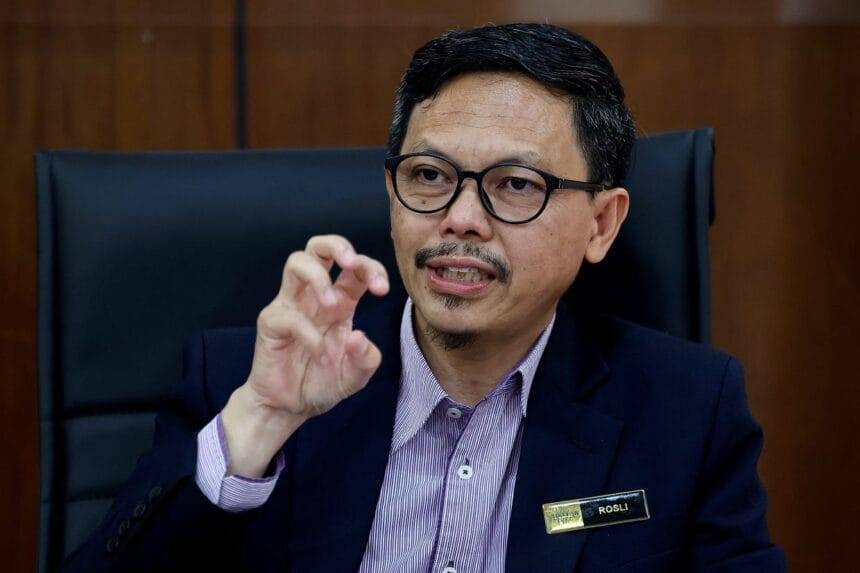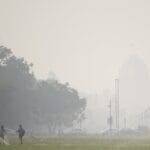Main Points In Hindi (मुख्य बातें – हिंदी में)
यहां पर दिए गए टेक्स्ट के मुख्य बिंदु निम्नलिखित हैं:
-
परमाणु प्रौद्योगिकी के लाभ: परमाणु प्रौद्योगिकी केवल ऊर्जा उत्पादन के लिए नहीं, बल्कि कृषि, स्वास्थ्य सेवा और उद्योग में भी महत्वपूर्ण योगदान दे सकती है, जिसके माध्यम से सामाजिक-आर्थिक विकास को बढ़ावा मिलता है।
-
मलेशिया की राष्ट्रीय परमाणु प्रौद्योगिकी नीति 2030: मलेशिया ने डीटीएनएन 2030 पेश किया है, जिसका उद्देश्य परमाणु प्रौद्योगिकी के शांतिपूर्ण उपयोग को बढ़ावा देना और 2030 तक घरेलू उत्पादों के निर्यात को RM2.4 बिलियन तक पहुंचाना है।
-
छह प्रमुख क्षेत्र: मलेशिया में परमाणु प्रौद्योगिकी के विकास के लिए छः प्रमुख क्षेत्र निर्धारित किए गए हैं: चिकित्सा और स्वास्थ्य सेवा, भोजन और कृषि, उपकरण निर्माण, पर्यावरण प्रबंधन, औद्योगिक अनुप्रयोग और परमाणु सुरक्षा।
-
परमाणु ऊर्जा का लाभ: परमाणु ऊर्जा एक कम कार्बन ऊर्जा स्रोत है और यह बहुत अधिक ऊर्जा उत्पादन करने में सक्षम है, जिससे यह जीवाश्म ईंधन का एक अधिक प्रभावी विकल्प बन जाता है।
- सुरक्षा उपाय: 3S अवधारणा (सुरक्षा, सुरक्षा और सुरक्षा उपाय) के तहत, मलेशिया ने परमाणु प्रौद्योगिकी के सुरक्षा मानकों को उच्च स्तर पर बनाए रखा है और इसके विकास में अनुसंधान और विकास (आर एंड डी) को बढ़ावा दिया है।
Main Points In English(मुख्य बातें – अंग्रेज़ी में)
Here are the main points from the provided text about nuclear technology in Malaysia:


-
Positive Applications of Nuclear Technology: The text emphasizes that despite the historical negative perceptions associated with nuclear events like Chernobyl and Hiroshima, nuclear technology offers significant benefits in agriculture, healthcare, and industry, which can drive socio-economic development.
-
Malaysia’s National Nuclear Policy (DTNN 2030): Malaysia is actively promoting the peaceful use of nuclear technology through its National Nuclear Technology Policy 2030, aiming for a RM2.4 billion export value of related products by 2030. This policy identifies six key areas for development, including medical and healthcare applications, food and agriculture, and environmental resource management.
-
Nuclear Technology in Energy Production: The text highlights the role of nuclear technology as a low-carbon and cost-effective energy source for Malaysia, positioning it as a viable option for the country’s future energy needs. The initial operational costs are higher, but the efficiency and energy density of nuclear energy make it a more sustainable choice compared to fossil fuels.
-
Public Safety Measures and International Compliance: Addressing public concerns about nuclear safety, the article notes that compliance with safety measures and international standards is a priority for Malaysia, under the oversight of the International Atomic Energy Agency (IAEA) through the "3S" concept: safety, security, and safeguards.
- Global Recognition and Facilities: Malaysia has gained recognition in the global nuclear ecosystem, establishing various facilities for research and application of nuclear technology. The country’s advancements have transformed it from a recipient of nuclear technology to a provider, showcasing its capabilities on the international stage.
Complete News In Hindi(पूरी खबर – हिंदी में)
बंगी: परमाणु प्रौद्योगिकी का उल्लेख करें और आमतौर पर जो बात दिमाग में आती है वह यूक्रेन में 1986 की चेरनोबिल आपदा या द्वितीय विश्व युद्ध के दौरान जापान में हिरोशिमा और नागासाकी पर बमबारी है।
हालाँकि, अब इस नकारात्मक कलंक को दूर करने का समय आ गया है क्योंकि परमाणु प्रौद्योगिकी कृषि, स्वास्थ्य सेवा और उद्योग जैसे क्षेत्रों में पर्याप्त अवसर और लाभ प्रदान करती है, जिससे देश के सामाजिक आर्थिक विकास को गति मिलती है।
विश्व स्तर पर, परमाणु प्रौद्योगिकी को सामाजिक-आर्थिक चुनौतियों का समाधान करने में सक्षम अग्रणी उन्नत प्रौद्योगिकियों में से एक माना जाता है। उदाहरण के लिए, जापान हिरोशिमा और नागासाकी की तबाही से उबरकर एक विकसित राष्ट्र और परमाणु प्रौद्योगिकी और ऊर्जा के लिए एक प्रमुख संदर्भ देश बन गया है।
इन लाभों से अवगत होकर, मलेशिया अब राष्ट्रीय परमाणु प्रौद्योगिकी नीति 2030 (डीटीएनएन 2030) पेश करके परमाणु प्रौद्योगिकी के शांतिपूर्ण उपयोग का पता लगाने के लिए सक्रिय कदम उठा रहा है। इस नीति का लक्ष्य 2030 तक घरेलू परमाणु प्रौद्योगिकी से संबंधित उत्पादों के लिए RM2.4 बिलियन के निर्यात मूल्य को लक्षित करते हुए, परमाणु प्रौद्योगिकी के शांतिपूर्ण उपयोग को मुख्यधारा में लाना है।
छह प्रमुख क्षेत्रों में परमाणु प्रौद्योगिकी विकास
मलेशियाई परमाणु एजेंसी (परमाणु मलेशिया) के महानिदेशक डॉ. रोसली दर्मावान (चित्र) डीटीएनएन 2030 के तहत छह प्रमुख क्षेत्रों की पहचान उन क्षेत्रों के रूप में की गई है जिनकी क्षमताओं को मलेशिया में परमाणु प्रौद्योगिकी के शांतिपूर्ण उपयोग के माध्यम से बढ़ाया जा सकता है।
संबंधित क्षेत्र चिकित्सा और स्वास्थ्य सेवा हैं; भोजन और कृषि; उपकरण और उपकरण निर्माण; पर्यावरण और प्राकृतिक संसाधन प्रबंधन; औद्योगिक अनुप्रयोग; और परमाणु सुरक्षा और सुरक्षा।
“डीटीएनएन के पास 19 प्रमुख कार्यक्रम, 40 प्रमुख पहल और 18 रणनीतियाँ हैं। यदि इन सभी कार्यक्रमों को लागू किया जाता है, तो उनसे 2030 तक स्थानीय परमाणु प्रौद्योगिकी-संबंधित उत्पादों के निर्यात मूल्य में RM2.4bil की वार्षिक वृद्धि में योगदान करने की उम्मीद है।
“मलेशिया सार्वजनिक-निजी भागीदारी में 20 प्रतिशत की वृद्धि के साथ-साथ अंतर्राष्ट्रीय सहयोग में 10 प्रतिशत की वृद्धि और शिक्षा, कृषि और पर्यावरण जैसे विशिष्ट क्षेत्रों में परमाणु प्रौद्योगिकी के अनुप्रयोग में 40 प्रतिशत की वृद्धि का लक्ष्य बना रहा है। , “उन्होंने बरनामा को बताया।
मलेशिया में परमाणु प्रौद्योगिकी
रोसली ने कहा कि मलेशिया 1897 से एक्स-रे मशीनों की शुरुआत के साथ परमाणु प्रौद्योगिकी का शांतिपूर्ण उपयोग कर रहा है, उन्होंने कहा कि तब से देश में इस तकनीक का उपयोग काफी बढ़ गया है।
उन्होंने कहा कि मलेशिया में परमाणु प्रौद्योगिकी पहले से ही खाद्य और कृषि, पर्यावरण, स्वास्थ्य देखभाल और उद्योग जैसे क्षेत्रों में लागू की जा रही है और इससे देश को काफी लाभ हुआ है।
“परमाणु तकनीक भोजन की प्रामाणिकता को सत्यापित करने या उसकी उत्पत्ति का पता लगाने में मदद कर सकती है। उदाहरण के लिए, यह पता लगा सकती है कि बेचे जा रहे हारुम मनीस आम वास्तव में पर्लिस से आते हैं या नहीं।
“पर्यावरण क्षेत्र में, हमारे पास भूस्खलन का कारण बनने वाले पानी के स्रोतों के साथ-साथ जल आपूर्ति के प्रदूषण के स्रोतों का पता लगाने के लिए आइसोटोप तकनीक का उपयोग करने में विशेषज्ञता है। (भूस्खलन और जल प्रदूषण के) कारणों को निर्धारित करने की इस विधि को पर्यावरण फोरेंसिक तकनीक के रूप में जाना जाता है। ,” उन्होंने समझाया।
विद्युत उत्पादन के स्रोत के रूप में परमाणु
रोसली ने कहा कि बिजली उत्पादन के लिए ऊर्जा स्रोत के रूप में परमाणु प्रौद्योगिकी का उपयोग करने से देश को महत्वपूर्ण लाभ मिलता है क्योंकि यह कम कार्बन ऊर्जा स्रोत है और अधिक लागत प्रभावी है।
“परमाणु ऊर्जा मलेशिया के लिए एक आदर्श विकल्प है क्योंकि यह अधिक किफायती है। जबकि प्रारंभिक परिचालन लागत अपेक्षाकृत अधिक है, परमाणु ऊर्जा अधिक ऊर्जा का उत्पादन कर सकती है जो परमाणु को जीवाश्म ईंधन के उपयोग के लिए अधिक कुशल और कम कार्बन वाला विकल्प बनाती है।
उन्होंने बताया, “इस तकनीक में उच्च ऊर्जा घनत्व है, जिसका अर्थ है कि यह कम मात्रा में सामग्री के साथ बड़ी मात्रा में बिजली उत्पन्न कर सकती है, कोयले के विपरीत जिसे निरंतर पुनःपूर्ति की आवश्यकता होती है।”
अर्थव्यवस्था मंत्री रफ़ीज़ी रामली ने पहले कहा था कि मलेशिया परमाणु ऊर्जा उत्पादन को देश के भविष्य के ऊर्जा स्रोतों में से एक के रूप में विचार कर रहा है।
उन्होंने कहा कि ऊर्जा संक्रमण और प्राकृतिक संसाधन मंत्रालय और विज्ञान, प्रौद्योगिकी और नवाचार मंत्रालय को इस उद्देश्य के लिए आवश्यक कानूनी और नियामक ढांचा विकसित करने का काम सौंपा गया है।
3S अवधारणा परमाणु का सुरक्षित उपयोग सुनिश्चित करती है
परमाणु प्रौद्योगिकी के बारे में सार्वजनिक चिंताओं को संबोधित करते हुए, रोसली ने कहा कि पिछले कुछ वर्षों में परमाणु ऊर्जा के दोहन में सुधार हुआ है और यह हमेशा अंतर्राष्ट्रीय परमाणु ऊर्जा एजेंसी (आईएईए) की निगरानी के अधीन है, जो 3एस अवधारणा का कड़ाई से पालन सुनिश्चित करता है: सुरक्षा, सुरक्षा और सुरक्षा उपाय।
उन्होंने कहा, मलेशिया में न्यूक्लियर मलेशिया 3एस का अनुपालन सुनिश्चित करते हुए देश के सामाजिक आर्थिक विकास के लिए परमाणु विज्ञान और प्रौद्योगिकी के उपयोग में अनुसंधान और विकास (आरएंडडी) करने के लिए जिम्मेदार है।
“परमाणु तकनीक वास्तव में दैनिक जीवन में उपयोग की जाती है, हालांकि लोगों को इसका एहसास नहीं होता है। मलेशिया के कृषि क्षेत्र में एनएमआर 152 चावल जैसी नई, सूखा और रोग प्रतिरोधी फसल किस्मों का उत्पादन करने के लिए विकिरण तकनीक लागू की गई है।
उन्होंने कहा, “यह सिर्फ एक उदाहरण है कि परमाणु प्रौद्योगिकी देश को कैसे लाभ पहुंचाती है,” उन्होंने कहा, यह देखते हुए कि परमाणु प्रौद्योगिकी का उपयोग 2022 में बटांग काली, सेलांगोर में भूस्खलन के बाद बचाव कार्यों के दौरान पीड़ितों का पता लगाने में भी किया गया था।
मलेशिया को वैश्विक परमाणु पारिस्थितिकी तंत्र में मान्यता मिली
रोसली ने कहा कि देश, न्यूक्लियर मलेशिया के माध्यम से, अब वैश्विक परमाणु पारिस्थितिकी तंत्र के भीतर अपनी बढ़ती मान्यता पर गर्व कर सकता है, जिसने संबंधित क्षेत्रों में 5,000 से अधिक विशेषज्ञों को तैयार किया है और अन्य देशों के लिए एक संदर्भ बन गया है।
उन्होंने कहा कि न्यूक्लियर मलेशिया सीटीबीटी के तहत अंतरराष्ट्रीय दायित्वों के साथ मलेशिया के अनुपालन को सुनिश्चित करने के लिए व्यापक परमाणु-परीक्षण-प्रतिबंध संधि (सीटीबीटी) के कार्यान्वयन के लिए राष्ट्रीय प्राधिकरण के रूप में भी भूमिका निभाता है।
“हम कैमरून हाइलैंड्स में एक रेडियोन्यूक्लाइड मॉनिटरिंग स्टेशन और न्यूक्लियर मलेशिया में एक राष्ट्रीय डेटा सेंटर संचालित कर रहे हैं।
उन्होंने कहा, “परमाणु प्रौद्योगिकी अपनाने के शुरुआती चरण में, मलेशिया इस प्रौद्योगिकी का प्राप्तकर्ता देश था। हालांकि, आज इसे एक दाता देश के रूप में मान्यता प्राप्त है, जिसका अर्थ है कि मलेशिया अब अन्य देशों को परमाणु प्रौद्योगिकी प्रदाता के रूप में स्वीकार किया जाता है।”
मलेशिया की परमाणु सुविधाओं को मान्यता दी गई
रोसली ने यह भी कहा कि देश के उद्योगों के तेजी से विकास के अनुरूप परमाणु प्रौद्योगिकी का उपयोग बढ़ा है, मलेशिया में परमाणु विज्ञान और प्रौद्योगिकी पर केंद्रित विभिन्न सुविधाएं और प्रयोगशालाएं हैं।
मलेशिया में एक परमाणु अनुसंधान रिएक्टर, ट्रिगा पुष्पाति रिएक्टर (आरटीपी) भी है, जो 1982 से परमाणु मलेशिया में काम कर रहा है।
अन्य सुविधाओं में भौतिक सुरक्षा प्रयोगशाला, मोबाइल रेडियोलॉजिकल प्रयोगशाला, रेडियोकेमिकल और पर्यावरण प्रयोगशाला और विश्लेषणात्मक रसायन विज्ञान प्रयोगशाला जैसी परमाणु सुरक्षा और सुरक्षा प्रयोगशालाएं शामिल हैं, जो परमाणु प्रौद्योगिकी का सुरक्षित उपयोग सुनिश्चित करती हैं।
विज्ञान, प्रौद्योगिकी और नवाचार मंत्री चांग लिह कांग को पहले यह कहते हुए उद्धृत किया गया था कि MOSTI वर्तमान में TRIGA PUSPATI रिएक्टर प्रतिस्थापन योजना पर एक तकनीकी अध्ययन कर रहा है। चांग के मुताबिक, यह अध्ययन डीटीएनएन 2030 रणनीति का हिस्सा है, जिसका उद्देश्य मलेशिया में परमाणु प्रौद्योगिकी विकास को मजबूत करना है।
चांग ने कहा, इस पहल के माध्यम से, देश को चिकित्सा, औद्योगिक और जैव विज्ञान क्षेत्रों में उपयोग किए जाने वाले विभिन्न प्रकार के रेडियोआइसोटोप के आयात पर अपनी निर्भरता कम करने की उम्मीद है, जिससे वैज्ञानिक ज्ञान और उच्च तकनीक नवाचार में योगदान मिलेगा।
इस वर्ष, न्यूक्लियर मलेशिया को बायोनेक्सस पार्टनर लेबोरेटरीज (बीएनपी) पुरस्कार मिला। यह पुरस्कार एजेंसी के मेडिकल टेक्नोलॉजी डिवीजन की फार्मास्युटिकल प्रयोगशाला को मिला। इसने 35वीं अंतर्राष्ट्रीय आविष्कार, नवाचार और प्रौद्योगिकी प्रदर्शनी में दो स्वर्ण पदक और अंतर्राष्ट्रीय विकास अनुसंधान और नवाचार आभासी प्रदर्शनी में एक स्वर्ण पदक भी जीता।
“मेरी आशा है कि समाज परमाणु प्रौद्योगिकी के बारे में डरेगा या नकारात्मक नहीं सोचेगा। सामान्य तौर पर, परमाणु ऊर्जा कोयले की तुलना में स्वच्छ और बेहतर है, जो कार्बन डाइऑक्साइड छोड़ता है,” रोसली ने कहा।- बर्नामा
Complete News In English(पूरी खबर – अंग्रेज़ी में)
When we hear about nuclear technology, we often think of disasters like the Chernobyl accident in Ukraine in 1986 or the bombings in Hiroshima and Nagasaki during World War II. However, it’s time to move past these negative perceptions, as nuclear technology has significant opportunities and benefits in areas such as agriculture, healthcare, and industry, contributing to a country’s socio-economic development.
Globally, nuclear technology is seen as one of the leading advanced technologies capable of addressing socio-economic challenges. For instance, Japan recovered from the devastation of Hiroshima and Nagasaki to become a developed nation and a key reference for nuclear energy and technology.
Recognizing these benefits, Malaysia is actively exploring the peaceful use of nuclear technology through its National Nuclear Technology Policy 2030 (DTNN 2030). The policy aims to integrate the peaceful use of nuclear technology into mainstream practices, targeting an export value of RM2.4 billion for related products by 2030.
Development of Nuclear Technology in Six Key Areas
Dr. Rosli Dharmawan, the Director-General of the Malaysian Nuclear Agency (Nuclear Malaysia), identified six key areas under DTNN 2030 where the potential for peaceful use of nuclear technology can be enhanced in Malaysia.
These areas include medical and healthcare services, food and agriculture, equipment manufacturing, environmental and natural resource management, industrial applications, and nuclear safety and security.
“DTNN includes 19 major programs, 40 key initiatives, and 18 strategies. Implementing these programs is expected to contribute RM2.4 billion annually to the export value of local nuclear technology-related products by 2030,” he stated.
Malaysia aims for a 20% increase in public-private partnerships, a 10% increase in international cooperation, and a 40% increase in the application of nuclear technology in specific areas such as education, agriculture, and the environment.
Nuclear Technology in Malaysia
Rosli mentioned that Malaysia has been using nuclear technology peacefully since 1897 with the introduction of X-ray machines, and its application has significantly increased since then.
Nuclear technology is already being used in food and agriculture, environmental management, healthcare, and various industries, benefiting the nation greatly.
“Nuclear technology can help verify the authenticity of food or trace its origin. For example, it can determine whether the ‘Harum Manis’ mangoes being sold actually come from Perlis,” he explained.
In environmental management, they utilize isotope technology to identify sources of pollution affecting water supply and the causes of landslides, a method known as environmental forensic technology.
Nuclear as a Source of Electricity
According to Rosli, using nuclear technology for electricity generation offers significant advantages, including being a low-carbon energy source that is more cost-effective in the long run.
“Nuclear power is an ideal option for Malaysia because it is more affordable. While the initial operational costs may be high, nuclear energy can produce a larger amount of electricity, making it a more efficient and low-carbon alternative to fossil fuels,” he noted.
He added that nuclear technology has a high energy density, meaning it can generate a large amount of electricity with a smaller volume of material compared to coal, which needs continuous replenishment.
Economy Minister Rafizi Ramli previously stated that Malaysia is considering nuclear energy as one of its future energy sources.
He mentioned that the Ministry of Energy Transition and the Ministry of Science, Technology, and Innovation have been tasked with developing the necessary legal and regulatory framework for this initiative.
3S Concept Ensuring Safe Use of Nuclear Technology
Addressing public concerns about nuclear technology, Rosli explained that there has been improvement in harnessing nuclear energy over the years, and it is always monitored by the International Atomic Energy Agency (IAEA), which ensures strict adherence to the 3S concept: Safety, Security, and Safeguards.
He emphasized that Nuclear Malaysia is responsible for researching and developing the use of nuclear science and technology while ensuring compliance with the 3S principles to support the country’s socio-economic development.
“Nuclear technology is indeed used in our daily lives, although many may not realize it. In Malaysia’s agriculture sector, radiation technology has been applied to produce new drought and disease-resistant rice varieties like NMR 152,” he pointed out.
He also noted that this technology was used in rescue operations during a landslide incident in 2022 in Batang Kali, Selangor, to locate victims.
Malaysia’s Recognition in the Global Nuclear Ecosystem
Rosli stated that through Nuclear Malaysia, the country can now take pride in its growing recognition within the global nuclear ecosystem, having trained over 5,000 experts in relevant fields and serving as a reference for other countries.
He mentioned that Nuclear Malaysia also plays a role in ensuring compliance with Malaysia’s international obligations under the Comprehensive Nuclear-Test-Ban Treaty (CTBT).
“We operate a radionuclide monitoring station in the Cameron Highlands and a national data center at Nuclear Malaysia,” he noted.
Furthermore, he explained that Malaysia was initially a recipient of nuclear technology but is now recognized as a donor country, meaning it is seen as a provider of nuclear technology to other nations.
Recognition of Malaysia’s Nuclear Facilities
Rosli also noted the increased use of nuclear technology, reflecting the rapid growth of industries in Malaysia, with various facilities and laboratories focused on nuclear science and technology.
Malaysia has a nuclear research reactor, the TRIGA PUSPATI Reactor (RTP), which has been operational since 1982 under Nuclear Malaysia.
Other facilities include nuclear security and safety laboratories such as the physical security laboratory, mobile radiological laboratory, radiochemical and environmental laboratory, and analytical chemistry laboratory, all ensuring the safe use of nuclear technology.
Science, Technology, and Innovation Minister Chang Lih Kang was previously quoted stating that MOSTI is currently conducting a technical study on the TRIGA PUSPATI Reactor replacement plan, which is part of the DTNN 2030 strategy aimed at strengthening nuclear technology development in Malaysia.
According to Chang, this initiative is expected to reduce the country’s reliance on imported radioisotopes used in the medical, industrial, and bioscience sectors, contributing to scientific knowledge and high-tech innovations.
This year, Nuclear Malaysia received the Bionexus Partner Laboratories (BNP) award for its Pharmaceutical Laboratory under the Medical Technology Division. It also won two gold medals at the 35th International Innovation, Invention, and Technology Exhibition and one gold medal at the International Development Research and Innovation Virtual Exhibition.
“I hope society does not fear or think negatively about nuclear technology. Generally, nuclear energy is cleaner and better than coal, which emits carbon dioxide,” Rosli concluded.










